Support strong Canadian climate journalism for 2025
No, Site C cannot be built.
Not because it’s an engineering impossibility – for centuries engineers have been building dams on rivers all over the world, although evidence for their supposed economic and environmental benefits is rapidly losing credibility.
Nor is it because of a lack of political and business support – it’s had that in abundance from the BC Liberal Party and its leader, Christy Clark, BC Hydro’s highly politicized management and the fossil fuel industry.
It’s because there are just too many well-informed opponents, at all levels of BC and Canadian and even international society, who see the folly and the anachronistic nature of this project. Where dams in the US are now being decommissioned, as their harm to ecosystems and other social values is better understood, to be constructing the most costly piece of infrastructure in the province’s history is simply a huge mistake.
Too much detailed information is now available about its formidable downside, and too many intelligent, well-informed, mature and focused groups and individuals are talking and writing and engaging with media about it.
Among them are groups or bodies like:
- Amnesty International,
- The Centre for Water Governance at UBC
- Peace Valley Environment Association
- Treaty 8 Tribal Association
- and Yukon to Yellowstone (Y2Y) Conservation Initiative.
Included in the ranks of opponents to Site C are individuals like:
- retired biologist Rod Backmeyer, with decades of rich experience studying wildlife and the unique ecosystem in the Peace River Valley – once designated as a future Provincial Park,
- Chief Roland Willson of the West Moberly First Nation, articulate, deeply-informed and persistent spokesperson for aboriginal rights in relation to the impact of Site C

- Bob Fedderly, a successful Fort St. John businessman who’s lived all his life in Peace country, has run for political office, and knows the business community intimately
- and farmers Ken and Arlene Boon, whose third-generation property has become a flash point for opposition to the dam because of their sustained, pointed and detailed critiques of the structure’s destructive impact on the Peace River Valley’s unique agricultural potential – and the arbitrary and heavy-handed way BC Hydro has treated them.
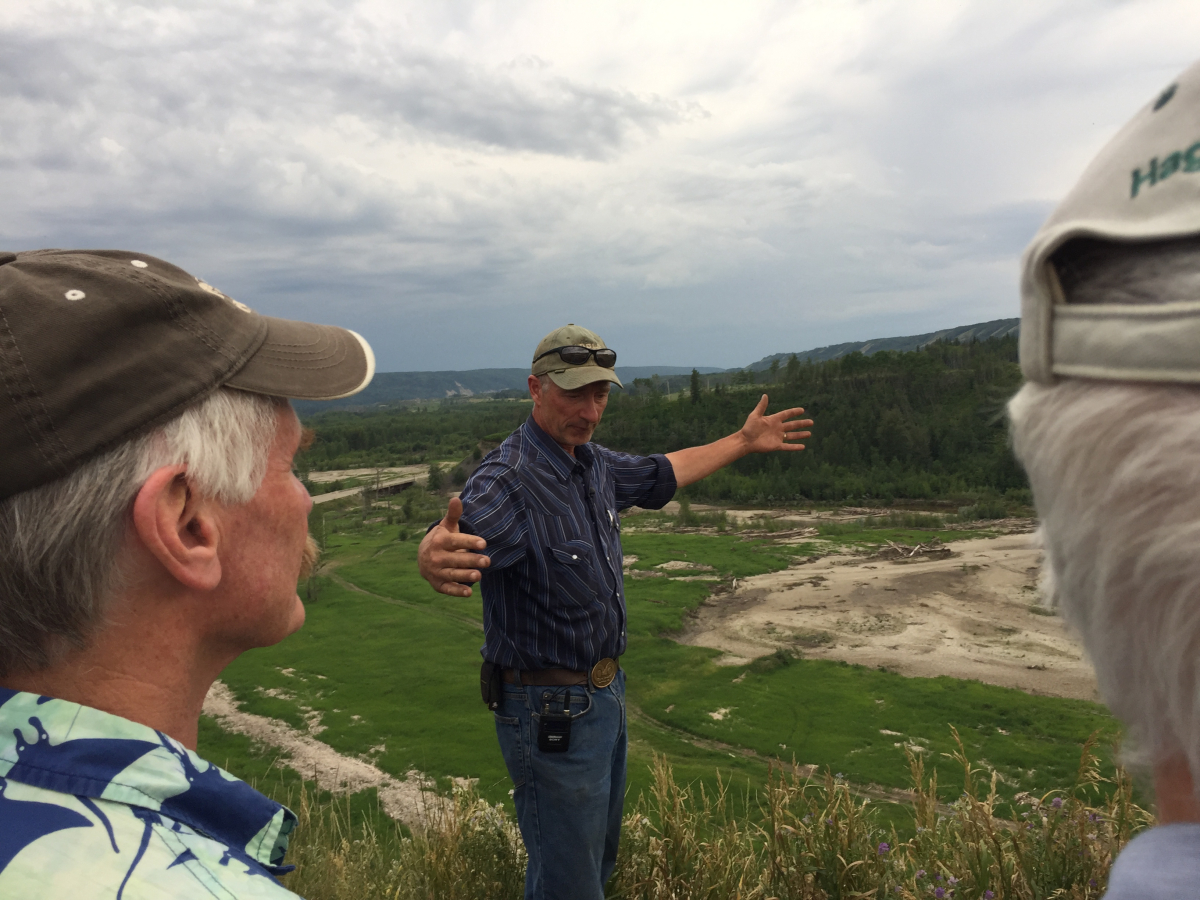
Neither of these short lists really does justice to the power and focus and depth of opposition to Site C. The names of groups and individuals not mentioned is far more numerous and more far-reaching than those that are included.
In aggregate, they are a formidable and virtually unstoppable representation of all that is best in any society – citizens who take the time to inform themselves in depth on a major public issue, and then act on what they’ve learned, not for their own material benefit or self-aggrandizement, but for the good of society as a whole.
I couldn’t have fully appreciated how deep and strong and well-informed the opposition to Site C was and is, had I not been immersed in the world in which this opposition lives and thrives – by walking with them in the valley and surrounding hills of the glorious Peace River itself.
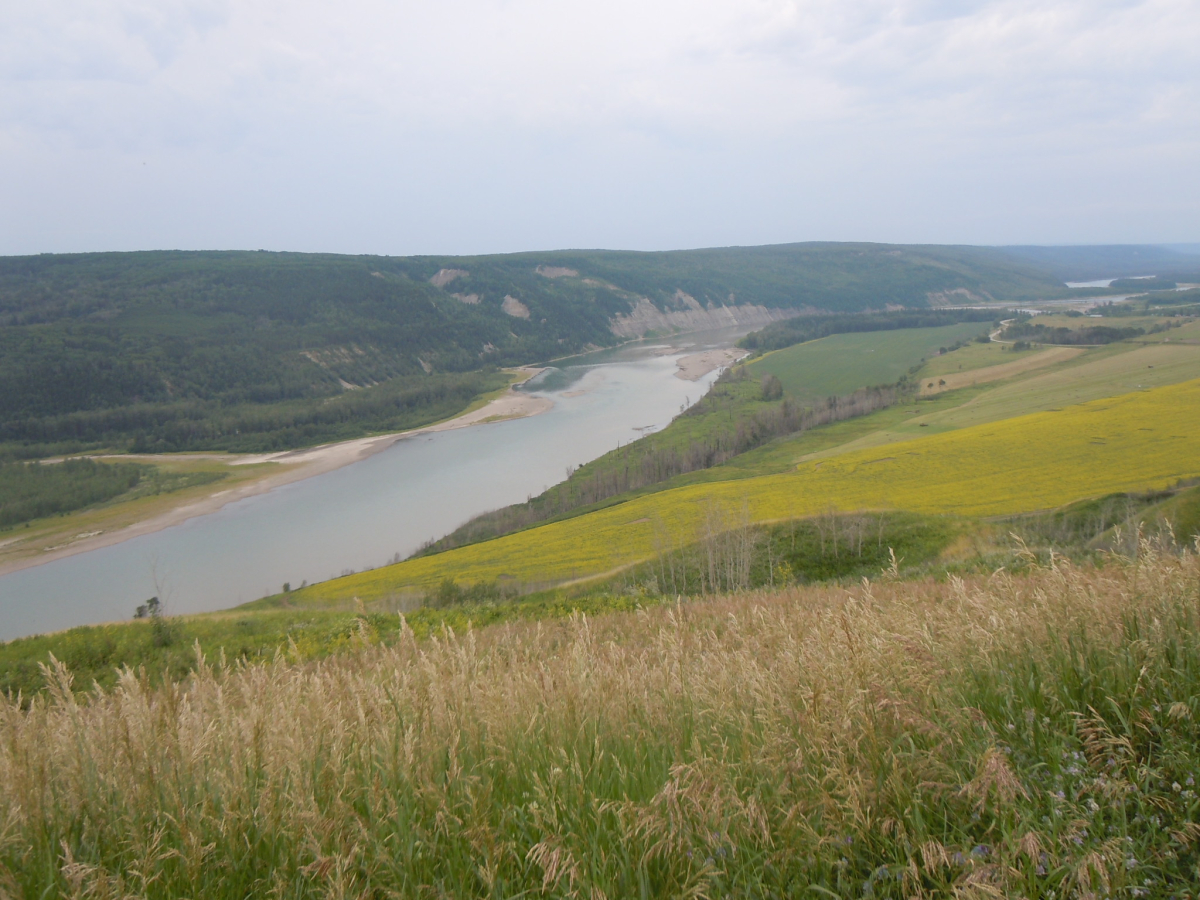
Travelling to the Peace to Paddle – and much more
On July 8 this year, I participated for the first time, along with colleague and friend Dr. Larry Barzelai, both of us part of Canadian Association of Physicians for the Environment, in the renowned “Paddle for the Peace”, an annual event, now in its 12th iteration. In this well-attended event, a couple of hundred paddlers in canoes and kayaks head down the exquisitely beautiful and unique Peace River for two hours, their presence a quiet celebration of this achingly beautiful watercourse, and protest against the looming threat of the proposed Site C dam.
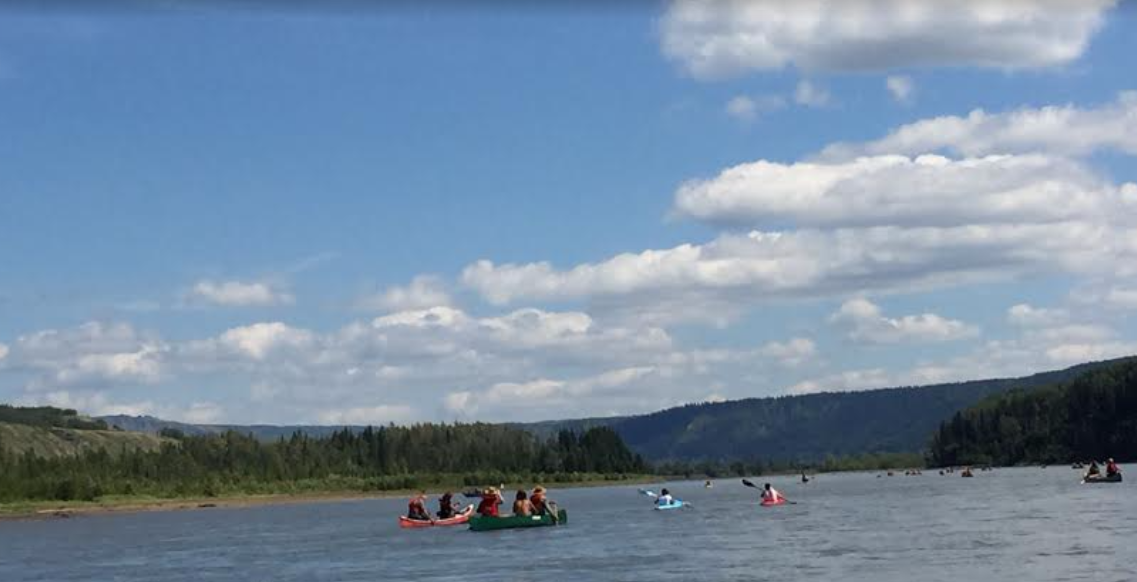
We also joined in on a tour of the area that would be flooded by the proposed dam reservoir, coordinated by PVEA executive director Andrea Morison and featuring biologists, farmers, First Nations leaders and local businesspeople as guides.
We also participated in a strategic planning session in downtown Fort St. John at the Treaty 8 Association office, where nearly forty advocates from the region and from all over Canada came to develop plans for bringing this massive political and industrial project to its knees – and replacing it with better developments – like a portfolio of smaller projects – more in tune with 21st century realities.
Site C, 83 km downstream from Site B – the Peace Canyon Dam, which in turn is 23 km downstream from Site A, the WAC Bennett Dam – has been proposed on the grounds that B.C. needs more electricity.
But I already knew, before coming to the Peace, that this was a greatly overstated claim, because abundant evidence shows that electricity consumption in BC has been flat for a decade. In fact, despite an increase in BC’s population of about 500,000 over the last decade, electricity generation within BC is now producing a surplus.
I also knew most independent observers felt that the reason for building Site C is to power the fossil fuel industry, particularly fracking, which extracts methane gas from deep underground, and converting it to LNG (Liquid Natural Gas) by compressing and cooling it until it become a fluid. These processes themselves consume vast amounts of energy – usually derived from burning methane itself, but just as easily derived from electricity.
We came Fort St. John, in a region long esteemed - to our mid-century human-centred minds – for its high agricultural, forestry and mining potential. Today the city is nicknamed “The Energetic City” because of its more recent and close ties to the oil and gas industry.
As we registered at our hotel, I casually picked up the July 6, 2017 copy of the Alaska Highway News (AHN), Volume 74, Number 27. That evening, the day before the Paddle, I read through my copy of the paper from cover to cover.
Ma Murray’s media creation tells it all
There, in article after article, I came across all the mixed emotions people in the region and elsewhere feel about Site C.
The Alaska Highway News was founded in the 1940s by the famously and fearlessly outspoken “Ma” Murray, variously described as “the rebel queen of the northwest”, “the salty scourge of Lillooet” and “Canada’s crusty queen of publishing”, who signed her columns: “"And that's fer damshur!" So it should have been no surprise that her paper would capture an authentic snapshot of the full Site C controversy, and reveal, between the lines, how much doubt and dismay runs below the surface in “The Energetic City”.

On the first page of the paper was an article about the Paddle for the Peace. It captured the high points of Site C’s vulnerability, mentioning that the change in the provincial government had exposed the project to the one thing the BC Liberals tried to protect it from: public scrutiny at the hands of the BC Utilities Commission (BCUC).
The BC Liberals' angst about this is particularly ironic, since the BCUC was actually created by the Social Credit Party, the political progenitor of the BC Liberal Party. Yet the relatively impartial BCUC had previously twice rejected proposals to build Site C, and so fearing a third dismissal, Christy Clark’s predecessor, Gordon Campbell, went ahead and passed a new law, the so-called Clean Energy Act, that allowed Site C to bypass BCUC review completely.
Politicians step into the picture
The article mentioned that provincial Green leader, Andrew Weaver, a climate scientist who previously held a senior position on the UN Intergovernmental Panel on Climate Change, had already toured the area, and that federal Green Party leader Elizabeth May would be participating – and not for the first time.
Also beginning on the front page was an article about the new NDP government and its leader John Horgan. Comments invited from the two Peace River Liberal MLAs, Dan Davies and Mike Bernier, were unsurprisingly negative, given the fact that both men have been employed for many years in the oil and gas industry. They repeated Christy Clark’s main talking point, that the new government could not ensure stability, ignoring the fact that their own Party’s budget speech had, to widespread astonishment, suddenly reversed almost all the BC Liberal Party’s established positions in a desperate bid to retain power.
A cartoon on page A6 of the paper mocked this abrupt and cynical change of course.
That most inconvenient fact of global warming
On page A3 of the AHN there was a short piece outlining the illuminating fact that, despite its close ties to fossil fuel extraction, Fort St. John had just voted to join the Fraser Basin Council’s Northeast BC Climate Risk Network, a body whose role is to coordinate adaptation to climate change. The decision underlined, in red, the deep-seated uncertainty that lurks in the hearts of many residents of Fort St. John and area, including their political leaders.
On the one hand, their livelihoods have been dependent in recent decades on the fossil fuel industry, most particularly oil and gas extraction. On the other, the region, like the rest of the province, is beset with extreme weather events, now wreaking havoc around the province in the form of massive forest fires directly linked to global warming.
Global warming, in turn, is now overwhelmingly recognized to be the result of increased greenhouse gases derived primarily from the humankind’s burning of fossil fuels.
One can only feel sympathy for the perplexed and uncertain citizens of Fort St. John.
The saga of community tensions continued on page A5 of the AHN, where another brief article outlined the refusal, by the Supreme Court of Canada, to hear appeals from the West Moberly and Prophet River First Nations for a judicial review of plans to go ahead with Site C without a proper discussion of their rights under Treaty 8.
The Supreme Court decision was based primarily on technical issues, and did not reflect in any way on the legitimacy of the Site C project itself. Nevertheless, it did offend First Nations throughout B.C., because of its lack of consideration of formal treaty obligations.
On Page A8, there was an article with multiple photos detailing the local Canada 150 celebrations.
At this the official ceremony, comments from community leaders were upbeat – Mayor Lori Ackerman praising First Nations for critical assistance in building the Alaska Highway, and Chief Marvin Yahey of the Blueberry River Nation focusing on strengthening relationships with the settler community. No one spoke of residential schools or marginalization or oppression or treaty rights.
Instead, First Nation dancers danced and First Nation drummers drummed.
It was on page A16, at the very back of the AHN’s first section, that an article and pictures displayed a separate Canada 150 event, one organized by Indigenous peoples themselves, celebrating Indigenous resilience in the face of multiple assaults on their culture, their bodies, and the right to speak their language – and even the right to gather together in a group.
Vested interests rise to the surface
On page A9, the vested interest side of the Site C story leaped off the page, in an article about the new and aggressive public relations initiative by oil and gas businesses hoping to benefit from contracts associated with Site C. The Independent Contractors and Businesses Association (ICBA), now representing the oil and gas sector through a merger with Energy Services BC, had just distributed posters throughout the area (and I later learned, on a billboard in the Victoria area) centred on the widely quoted figure of 2,200 construction jobs that will be lost if Site C isn’t built. This figure has been widely criticized – particularly by Bob Fedderly – with a more accurate number considered to be more like 1,000 construction jobs, since the rest will be offsite and even out of the area, in design and management offices and other associated services.
But then I came across the most intriguing discovery of all – and the best hidden.
Right beside this article was a greyed-out, innocuous-looking announcement bearing the BC Hydro name and logo, entitled blandly: “Land Act: Notice of intention to apply for disposition of Crown Land”. The text in the announcement was dull and uninformative, but there was a file number listed, 8015927. I decided to look this file up to see what was behind this non-descript announcement.
What I found made it obvious why the notice was so vague.
The file listed only as 8015927 shows what may be the real intended function of the Site C Dam.
After all the rhetoric, Site C’s real purpose emerges
As others had suspected, the real reason for Site C likely isn't about powering 450,000 homes, which the BC Hydro public relations department – and the former BC Liberal government – has incessantly said it was.
And it probably never was.
I believe the reason the Independent Contractors and Businesses Association is doing PR for the dam is because Site C is being built to power their baby, the “unconventional” gas industry (“unconventional gas” is another term for methane derived from fracking), and it's possible they don’t want to throw their baby out with the spilled water from Site C.
Here’s what this Application states, in the attachment entitled “Management Plan”, on page 6, Section 2:
“The Peace Region electrical load is forecast to increase in the next 30 years, primarily driven by unconventional gas production… Gas producers have expressed an interest in using electricity rather than gas for upstream gas production, processing, and compression facilities.” [Emphasis added]
The Plan goes on to describe various surveys to be done in preparation for constructing more power lines to the Dawson Creek area to service the fracking industry.
The next few lines display the kind of ingenious hair-splitting that has characterized the BC Liberals' and BC Hydro’s attempts to obscure the real purpose of Site C:
“The… Project is not part of the Site C Clean Energy Project, and… Is not required for Site C to proceed. However, before the… Project can be put in service, both the Southbank substation and the first of the two 500 kV transmission lines, all of which are being constructed as part of Site C, need to be in service.” [Emphasis added]
In other words, the new transmission lines officially have nothing to do with Site C, but unofficially are an essential part of the Site C power distribution system.
This kind of prevarication is employed by public figures seeking to attain “plausible deniability” – the opportunity, for example, for a spokesperson to vehemently swear, under oath: “I never saw this document before”, because he or she instead cleverly asked another person to read the contents to them out loud.
Site C - no longer “clean”, no longer “green”
So there it was, in a technical document, under the BC Hydro name, on a website managed by the Ministry of Forests, Lands and Natural Resource Operations.
Supposedly “clean” hydroelectric power is to be used not to power electric cars or computers or washing machines for ordinary citizens, but to power “dirty” fracking operations, presumably to help them spruce up their large and politically incorrect greenhouse gas footprint. Former BC Environment Minister Mary Polak had admitted as much when she commented on the government’s dreadful Climate Leadership Plan in May, but here it was in a ground-level operational document.
The only trouble with this scenario is that hydroelectric dams have been conclusively shown to be “dirty” themselves, generating large amounts of methane gas from rotting vegetation in flooded land upstream from the dam.
Not only that, but the fracking industry itself is far “dirtier” than either government regulators or industry itself has admitted. A recent study showed that greenhouse gas releases, already considered by reputable experts to be as bad as those from coal, were up to two and a half times greater than previously described by industry and government regulators.
Finally, reality strikes
There was one more article that caught my eye in the Alaska Highway News – and it really was the pièce de résistance.
On page A15 there was a half-page column by Don Pettit, a Dawson Creek businessman and co-founder of the Peace Energy Cooperative, the organization that built the Bear Mountain Wind Park. The content of this column more or less laid out all the reasons why Site C is a costly anachronism that can never be built.
The column was essentially a recitation of all the changes going on in the world that make oil and gas – and Site C – increasingly obsolete, such as:
- The year 2015 was the year in which the increase in renewable energy, at 147 GW, exceeded the increase in coal, oil, gas and nuclear energy combined
- Solar electrical energy is growing so rapidly that the International Energy Agency estimates that in three decades solar photovoltaic panels and other devices will be the dominant source of electric power in the world
- The fossil fuel industries are now confronted with the delicate problem of “stranded assets” meaning they’re sitting on large oil, gas and coal deposits that can never be developed if global warming is to be reined in below 2°C
- As a consequence of this, informed investors increasingly see fossil fuel stock prices to be overvalued, and banks and investment advisors are warning against buying them
- Fossil fuel industries could lose up to $33 trillion over the next quarter century if humanity succeeds in keeping global temperatures down, with one bank estimating stranded assets could total $100 trillion
- Car manufacturers who make vehicles running on gas will be hurt badly, while company switching to electric vehicles will flourish
To underline his main point that we must adapt or suffer, Pettit includes a picture of an old Kodak camera, noting that the Kodak company, “the 100-year old, biggest and most successful film and camera maker in history, disappeared overnight because it did not adapt quickly enough to the digital era.”
The message could not be more blunt: adapt to the new reality, or perish.
Local citizens caught between new science and old industries
When we arrived in Fort St. John, my colleague Larry and I joked about being run out of town because of our opposition to Site C. Reading this column by Don Pettit, directly challenging the myth of fossil fuel ascendancy, made it reassuringly clear that Fort St. John is a city with a preponderance of friendly, decent people, who accept that differences of opinion are acceptable and healthy – and are, many of them, confused. I also realized that Site C simply cannot be built because it’s a complete anachronism, an energy dinosaur, a representative of antique times more appropriately situated in the late 19th century.
Some citizens of Peace country recognize this already. More will come to understand this, despite the protests of corporate players and sold-out political leaders.
When they do, those same citizens can and will adapt to a change in direction.
There is abundant evidence that the fossil fuel industry is generally job-poor, whereas the various renewable energy technologies are almost all labour-intensive. As these realities become more widely known, it will become easier to adopt more progressive approaches to energy production, approaches which will disrupt ecosystems only minimally and transiently, offer more and better opportunities for employment, and respect and even strengthen human rights and social cohesion.
In the description of a book about Ma Murray on Amazon, she is portrayed as someone who “taught Canada that an honest opinion, salted with common sense, can shake governments and help shape a nation.”
Perhaps if Ma Murray were still alive, her forthright and unflinching voice might have been enough to force more rigorous reviews of Site C before it got anywhere near being this far down the road. And that's "fer damshur."

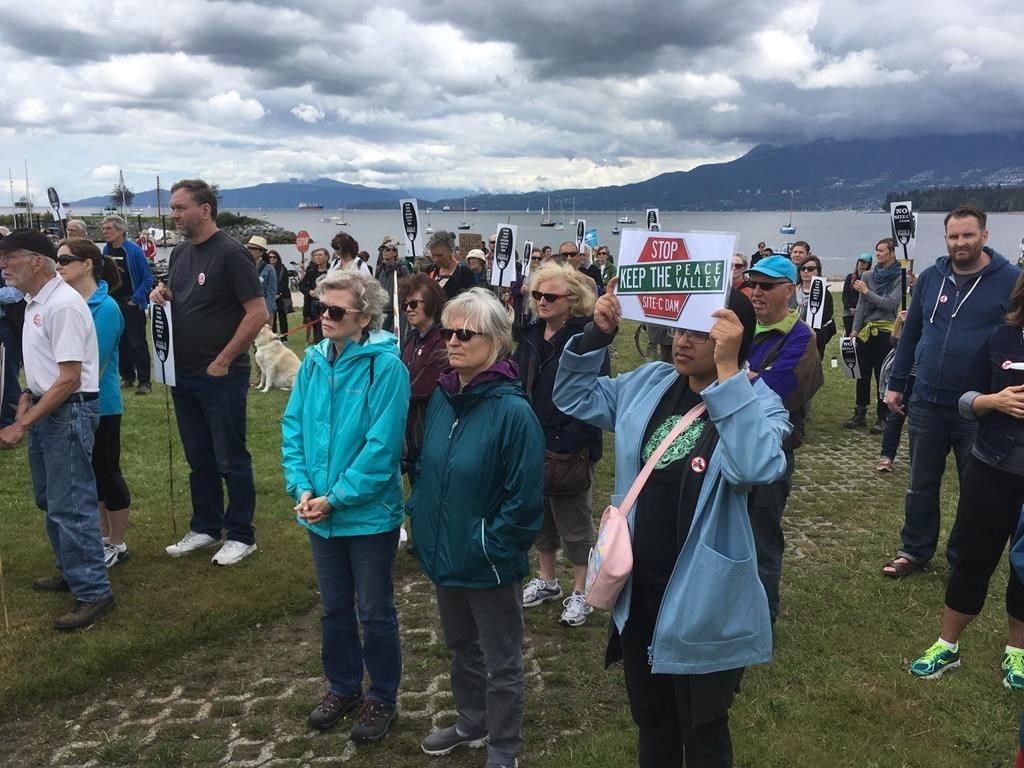

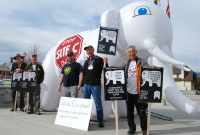
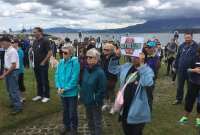
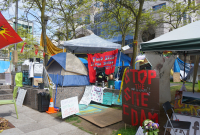
Comments
Before you swallow this whole, please read:
http://www.dreamgreen.ca/SiteC.pdf
A solid victory for good sense.
Great article.
Anyone interested in the way First Nations in the area have been treated should read the book "Maps and Dreams" by Hugh Brody. Site C would be a continuation of white men ignoring the provisions of Treaty 8.
We were also there this summer, with two of our grandchildren. Wanted them to see the river we are going to preserve while they are young.....so that in the years to come, perhaps they will return to paddle it anew, with their children, and share with them the story of citizen activism, and how it saved this amazing valley.
No Site C. Time to say no to unconventional fossil fuels and Yes to innovative green technologies. That is where the jobs of the future are.
Get More Info